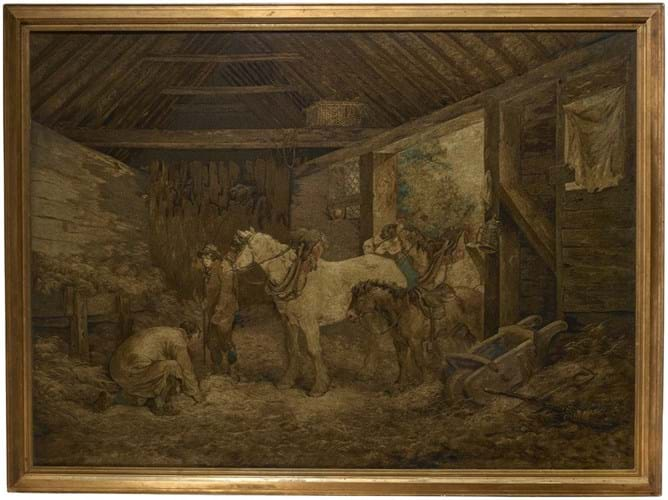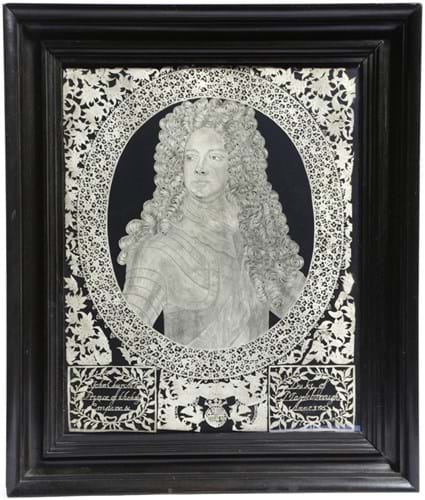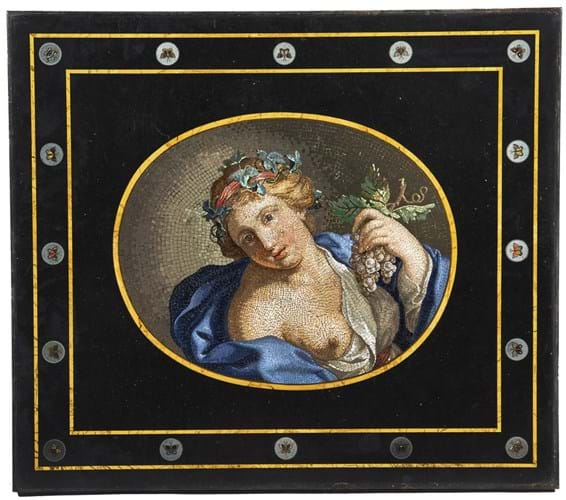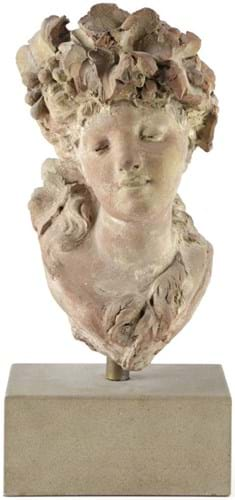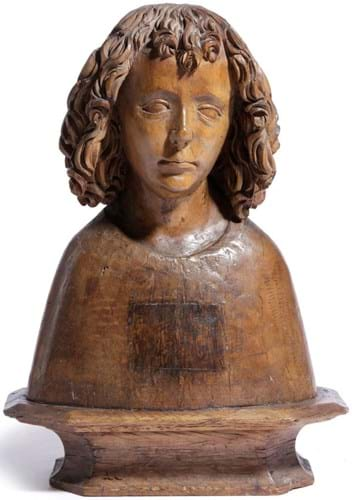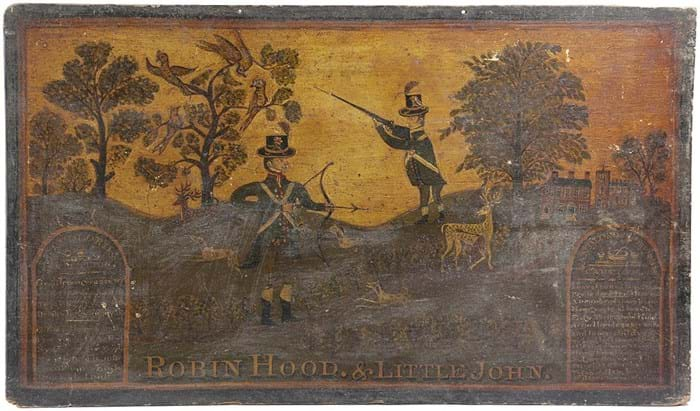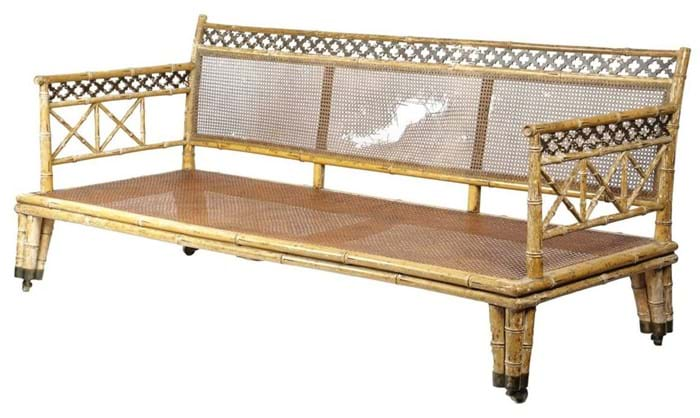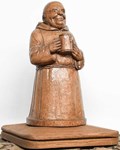Mary Linwood (1755-1845) ran a finishing school in Leicester before her needlework pictures became popular enough for her to start a gallery at Sir Joshua Reynolds’ former Leicester Square studio.
Reynolds regretted they did not qualify to be hung in the RA, not being paintings, drawings or sculpture, but they were highly valued.
In 1789 Linwood was reportedly offered 3000 guineas (about £400,000 today) for her Salvator Mundi, after Carlo Dolci. It is now in the Royal Collection.
Horse sense
Only occasionally do they come for sale today. The example offered at Woolley & Wallis (26% buyer’s premium) on July 5-6 was an embroidery evocation of George Morland’s 1791 oil Inside of a Stable (now in the Tate).
Housed in a gilt-frame, at 17in x 6ft 6in (44cm x 1.99m) it was the same size as the original. Worked in worsted wool and silks in a variety of stitches it included the ‘signatures’ of both Morland and Linwood and the date 1803.
It was not expected to approach figures achieved in Linwood’s lifetime but it doubled the top estimate, selling to a UK buyer at £16,000.
Another example of ‘but is it art?’ in this Salisbury sale was a Queen Anne era cut-paper picture.
In the 17th and 18th century, cut-paper pictures – often called shades – depicted a larger range of subject matter than the profile silhouettes popular in the 19th century.
The craft was practised by well-to-do amateurs who attended lessons and bought patterns from print sellers or professionals such as London-based Irish professional paper-cut artist Nathaniel Bermingham. His remarkable memorial work showing Britannia mourning over a portrait medallion of Frederick, Prince of Wales is perhaps the best paper-cut in the V&A collection.
The rare image offered at the W&W auction was based on the portrait of John Churchill, 1st Duke of Marlborough (1650-1722) by the Westphalian painter John Closterman (1660-1711). Among the intricately cut details is the inscription John Churchill, Prince of the Holy Empire & Duke of Marleborough [sic], Anno 1705.
Purchased from London dealership Jeremy Ltd, it came for sale as ‘the property of a nobleman’ with an estimate of £2000-3000 and sold at £5500.
Sale toppers
Leading the 750 lots in the auction overall – 84% of which sold to a £502,000 hammer total – was an Italian black marble roundel set with a century 18th century micro-mosaic panel of a bacchante and 16 smaller rondels of butterflies.
As the work was an 18th century product from the Vatican Mosaic Workshop, the excellence of the craftsman was guaranteed. It sold to a UK bidder on the lower £20,000 estimate.
Some 95 lots in the sale came from the collection of banker Rupert Hambro (1943-2021) and his wife, art consultant, fashion editor and painter Robin Hambro (1934-2022). Offered without reserve, these attracted wide UK and US interest and some serious bidding.
Estimated at £300-400 on the assumption that it was a later copy, a 15in (38cm) tall terracotta bust of a bacchante signed A. Rodin received an unexpected number of pre-sale inquiries. When it sold to a French dealer at £9500, some were asking if it was by the great man himself.
Horne collection
Also popular were the 23 lots from the home of Jonathan Horne, the Kensington Church Street ceramics specialist who died in 2010.
A 16th or 17th century German or Netherlandish limewood bust of a long-haired young lady in the manner of Tilman Reimenschneider was predictably contested well above the £200-300 guide.
Possibly originally a reliquary, the 14½in (37cm) tall carving sold to a UK dealer at £3000.
From another source was a great piece of English folk art: a 17 x 2ft 6in (44.5 x 75.5cm) tavern sign estimated at £300-500. Painted with soldiers above the title Robin Hood & Little John and the enigmatic phrases Landlords Invitation and Landlords & Drunkards Caution, it sold to the UK trade at £6000.
Faux bamboo
Star among the furniture was an early 19th century painted faux bamboo sofa, in the style favoured by the Regent at Brighton Pavilion. The 6ft 10in (2.08m) wide sofa was pitched at £800-1200 but sold to a regular bidder at Salisbury at £15,000.
The more restrained elegance of Prinny’s father’s reign was exemplified by the c.1770, 3ft 4in (1.02m) wide mahogany serpentine commode catalogued as in the manner of Henry Hill of Marlborough.
Pitched at £2500-3500, it went to a Canadian bidder at £9000.
In the ever-dependable niche-market of Howard & Son furniture, a pair of late 20th century sofas stamped to one leg Howard Chairs Ltd, London, England quadrupled a conservative estimate at £4000.
Another pair of late 20th century sofas, catalogued as Howard style, possibly by George Smith (the London and Cramlington, Northumberland maker established in 1985), made a six-times estimate £6000.
Clocking in
The clocks were topped by a Victorian longcase: a c.1840 regulator signed to the silvered dial James Condliff/Liverpool.
The 6ft 6in (2m) tall mahogany case contained a brass movement five-pillar movement and maintaining power and featured a glass mercury pendulum jar with adjusting block. Pitched at £4000- 6000, it went to the trade at £9500.
A c.1690-95 ebony bracket clock with a twin-fusee repeating movement was inscribed to the engraved backplate and brass dial Alex[ander] Hewitt/London, a highly regarded but rare maker. Housed in a 13in (35.5cm) tall case with decorative caddy top, it sold just shy of top estimate at £7800.
A more familiar name Vulliamy/London was inscribed to the unusually large 14in (35.5cm) silvered dial of a 2ft 3in (69cm) tall drop-dial wall clock.
Dated c.1825, the clock had a brass eight-day chain driven twin-fusee movement, enclosed in a mahogany case with access door to the brass bob pendulum.
It sold at a top-estimate £6000.


